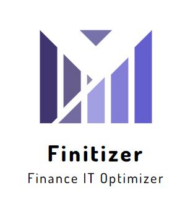Cloud Optimization
The Finitizer platform offers highly actionable recommendations across various domains, including Compute, Disk, Storage, and Big Query within the realm of cloud computing. Implementing these recommendations will result in instant Return on Investment (ROI).

Finitizer Advance Recommendation Engine (FARE) provides detailed views and recommendations on improvements including the following:
GCP Anomalous Spending RE
The anomalous spending report is used to swiftly identify and tackle potential problems like sudden spikes in cost, which could be planned or accidental over provisioning of resources. This not only aids in maintaining control over GCP costs but also provides additional benefits such as improved budgeting, enhanced security, and better resource management.
The recently increasing costs report provide users real time information on the GCP SKU, cost last week, the cost in the current week and the large weekly change for each GCP project.
Compute Engine Optimization RE
Most organizations lack visibility into their GKE and CPU utilization. Furthermore most organizations run GKE at very low utilization which results in substantial cost inefficiencies due to unused resources (idle capacity) resulting in significant wasted cost.
The Compute Engine Optimization Report provides Machine Type, Auto scaling information, CPU utilization, Memory utilization and wasted cost for each GKE cluster and Node Pool. The Compute Engine Cost Optimization report also provides specific recommendations on how to fix each GKE cluster and Node Pool.
- With GKE 1.24 node pools can be automatically down scaled all the way down to 0, and scaled up again as the number of pods are increased.
- For the most substantial workloads, verify whether Horizontal Pod Autoscaling (HPA) is enabled or if there is a fixed number of pods. Additionally, consider assessing minimum pod count has been over provisioned.
- Recommendations for optimizing pod requests to achieve efficient bin packing.
- Recommendations for custom machine type if the workloads are using high memory and low CPU.
- Recommendations for optimal custom machine type workloads with high memory requirements and low CPU utilization.
- Recommendations for Compute Engine Machine Type Selection – It’s crucial to utilize cost-effective machine types to minimize expenses
- Recommendations for rightsizing your workloads. This is essential for both cost savings and reliability. By adjusting workload requests to better represent actual usage, you can ensure that your workloads use the right amount of resources, which will save money and increase reliability.
Cost Optimization for Non Prod Environment RE
The costs for Non production environments should ideally be close to zero. These environments are often idle as they’re only used during specific testing or deployment phases, not round-the-clock like Production. Test and Staging environments typically require fewer resources as they’re not processing real user traffic. With automation, these environments should be scaled down or shut off when not in use.
Recommendations including Cluster Autoscaler, Horizontal Pod Autoscaler and right-sizing large workloads for every node pool.
Cloud Storage and Disk Optimization RE
Optimizing storage and disk usage in Google Cloud Platform (GCP) is crucial for cost reduction. It ensures efficient resource utilization, minimizes unnecessary expenses, and enhances overall performance while balancing cost-effectiveness. Properly optimized storage allows seamless scaling up or down to avoid resource waste. Implementing caching mechanisms reduces data transfer, improves performance, and lowers costs. Managing data retention based on compliance and legal obligations avoids unnecessary storage expenses. Choosing the right storage class (e.g., Standard, Nearline, Cold line) balances cost and performance. Additionally, optimized storage enhances data access speed and reduces latency, benefiting both users and costs.
- Recommendations Determine if persistent disks can be moved from SSD to Balanced/Standard
- Recommendations for old disk snapshots clean up
- Recommendations for buckets with low read/writes should use Nearline, Coldline or Archive
- Recommendations for lifecycle Rules to move objects to less expensive storage classes or delete them
- Recommendations for choosing HDD disk over SSD whenever possible
Cloud SQL Optimization RE
Optimizing Cloud SQL in Google Cloud Platform (GCP) is crucial for cost reduction. By leveraging recommendations provided by the report we can detect and right-size over-provisioned instances, identify idle instances, and optimize billing. Additionally, consider using committed use discounts for long-term cost savings.
- Recommendations to right-size instances. The system uses Cloud Monitoring metrics.
- Recommendations to detect and right-size over-provisioned instances
- Recommendations to buy Committed Use Discounts (CUDS)
CUDS Optimization Report RE
Compute Engine is the largest spend for most companies. To optimize spend we need to make sure that a large amount of spend (85% or more) of the total spend is covered by CUDS. GCP users do not have this visibility.
- The CUDS Optimization report is used to determine whether there’s a need to purchase additional CUDs for compute engine or other resources.The recommendation chart breakdown includes the CUD cost that is being attributed to the project.
- The CUDS optimization report provides recommendations for purchasing CUDS.
- The CUDS optimization report assists users in tracking CUDS expiration, ensuring timely management
Cloud Logging Optimization Report RE
Optimizing Cloud Logging in Google Cloud Platform (GCP) is crucial for cost reduction. By analyzing spending, eliminating wasteful logs, setting retention periods, and leveraging log-based metrics, you can efficiently manage costs while ensuring effective observability and troubleshooting. The Cloud Logging report includes:
- Recommendations for default retention policy after reviewing log volume
- Recommendations for log retention policies based on compliance and business requirements.
- Enable log sampling or filtering to reduce unnecessary log data.
- Enable logging during critical events or for troubleshooting purposes, rather than logging everything continuously.
Cloud Bigtable Optimization Report RE
Optimizing Google Cloud Bigtable is essential for cost reduction. Recommendations provided by the report include:
- Autoscaling: Enable autoscaling to align node count and costs with throughput
- Storage Optimization: Use data encoding and timestamps to reduce storage size and delete unnecessary data
Google BigQuery Optimization Report RE
Optimizing Google Cloud Big Query for cost is crucial. It ensures that queries run quickly and efficiently, even as your data grows. The Big Query Optimization report provides specific recommendations to reduce cost and minimizes failures, as optimized queries consume fewer resources and perform better. The automated recommendations include Normalized Table Relations and Cost-Effective Query Design.
